





Colorado Domestic Violence Sentencing – A Change In The Approach To Mandated Domestic Violence Treatment Requirements
Introduction – As a result of the reevaluation of the “one size fits all” mandated 36 week approach to mandatory treatment in Colorado Domestic Violence cases – the State Legislature changed their approach to the time necessary to complete the mandated treatment.
This page addresses that change.
New Treatment strategies for Colorado domestic violence offenders
In the state of Colorado domestic violence treatment is overseen by the Violence Offender Management Board (DVOMB).
A controversy emerged for the past several years regarding the 36-week minimum batterer intervention treatment as being a “one size fits all” model that does not distinguish between higher and lower risk offenders.
Social Research has shown that placing lower risk offenders with higher risk offenders in the same treatment group is counter-productive to desired treatment outcomes.
In response to these concerns the DVOMB now uses principles of “evidence-based practices” to identify the risk factors that are linked to recidivism for domestic violence offenders.
Based on this literature, the ‘Domestic Violence Risk and Needs Assessment’ (DVRNA) and differentiated treatment protocol were developed and are now used.
The DVRNA – Assessing The Risk Of An Alleged Colorado Domestic Violence Offender
The Domestic Violence Risk and Needs Assessment Instrument (DVRNA) is supposedly designed to identify risk factors that should be considered when working with domestic violence offenders in treatment. The DVRNA utilizes a structured decision-making process that is said to improve the accuracy of decision-making based on risk assessment. This instrument presents a framework within which to assess the risk of future violence for domestic violence offenders in treatment.
The DVRNA takes numerous risk factors that have been identified through research as increasing the risk of violence or escalating its seriousness and consolidates these factors into a single measure, thus providing a method of determining the likelihood (probability) of ongoing or repeat violence.
How To Gauge The Need For Domestic Violence Treatment
The need for the courts is to be able to classify offenders according to risk because the research on offenders in general demonstrates that when risk corresponds to intensity of treatment, there is a greater possibility to reduce recidivism.
The DVRNA is comprised of 14 different empirically based domains of risk.
The SARA Test
The most tested clinical assessment for assessing the risk of domestic violence is the SARA.
The 20 factors included are characterized by criminal history, psychosocial adjustment, spousal assault history, and the index offense. Some items are related to the empirical research literature of the predictors of domestic violence or recidivism, others were sectored on the basis of clinical experience.
The ODARA Test
The ODARA is a 13-item actuarial risk assessment constructed specifically for wife assault. The items were derived from information available to, and usually recorded by police officers responding to domestic violence calls involving male perpetrators and female partners.
The Level of Supervision Inventory (LSI)
This test is a 54- item risk/need classification instrument. This instrument is composed of ten subscales that contain both “static¨ (e.g. criminal history) and “dynamic” (e.g. alcohol/drug problems, family/marital) risk factors.
The DVSI Test
The DVSI – developed by the Colorado Department of Probation Services consists of 12 social and behavioral factors found to be statistically related to recidivism by domestic violence perpetrators while on probation.
These questions are designed to elicit information that is pertinent to determining an offenders supervision level, including:
(1) criminal history;
(2) past domestic violence, alcohol, or substance abuse treatment;
(3) past domestic violence restraining /protection orders, including violations;
(4) previous non-compliance with community supervision, and (4) various other static and dynamic factors.
The Danger Assessment Scale
This scale bell for nurses assesses the likelihood for spousal homicide. The first part of the tool assesses severity and frequency of battering by presenting the woman with a calendar of the past year. The second part includes yes-no questions that weigh lethality factors.
How They Determine Your Risk To Re-Offend
Risk factors in this area are measured along two main dimensions. Criminogenic factors included substance abuse, psychopathy, pro offending attitudes and beliefs while the non-criminogenic dimension measured self-esteem, anger control, impulsiveness, anxiety, unemployment, social support and environmental factors. It was recognized that these dimensions did not act in isolation of each other, and any factor alone would not predict abusiveness.
The DVRNA does not predict the behavior of any given individual. The single best predictor of future violent behavior continues to be past violence and we cannot, in any absolute sense, predict lethality or serious injury. The best they can do is to evaluate comparative risk.
Conclusion: As a convicted domestic violence offender – you will be tested applying these scales and predictors – therefore understanding what you will be asked and how your responses will be measured should be valuable information.
For more information in this area – and to shorten your treatment requirements – go to this website:
Here Is a Sample of Two of the Dv Guidelines
GP 3.10 Offenders are capable of change.
Responsibility for change rests with the offender. Individuals are responsible for their attitudes and behaviors and are capable of eliminating or modifying abusive behavior through personal ownership of a change process. Ideally, this includes cognition, affect, and behavior. Treatment enhances the opportunity for offender change. Change is based on the offender’s motivational levels and acceptance of responsibility. Motivation for change can be strengthened by effective treatment and community containment.
GP 3.12 Court ordered offender treatment differs from traditional psychotherapy.
In traditional psychotherapy, the client engages in a voluntary therapeutic relationship with a therapist of his/her choice, based largely on goals and purposes decided by the client. Court ordered offender treatment differs from traditional therapy in the following ways:
Treatment is not voluntary.
A therapeutic alliance is not a prerequisite for treatment.
The offender enrolls in treatment at the court¡|s direction, and sanctions are applied for failure to participate.
The offender must receive treatment only from providers approved by the state to provide the treatment.
Individual treatment goals are determined by the therapist to reduce recidivism and increase victim and community safety.
Decisions regarding treatment and containment are made jointly between approved providers and criminal justice agencies.
Approved providers are required to consult and communicate with the victim advocate and other involved agencies.
Confidentiality is limited by the requirements of the criminal justice system and the needs of victim safety.
Victim advocacy is an essential component of offender treatment.
Minimization and denial of the need for treatment is expected, and therefore, treatment involves the challenging of the offender¡|s perceptions and beliefs.
Other Articles of Interest:
- The Most Common Colorado Domestic Violence Crimes
- The Wrong Person Is Arrested – Understanding Victim Defendant Representation In Colorado Domesitic Violence Cases
- Colorado Common Domestic Violence Crimes –
- Colorado Habitual Domestic Violence Offender Law – CRS Section 18-6-801(7)
- Colorado Law: Understanding Colorado Domestic Violence Cases – FAST TRACK and Other Laws That Impact Your Domestic Violence Case






















